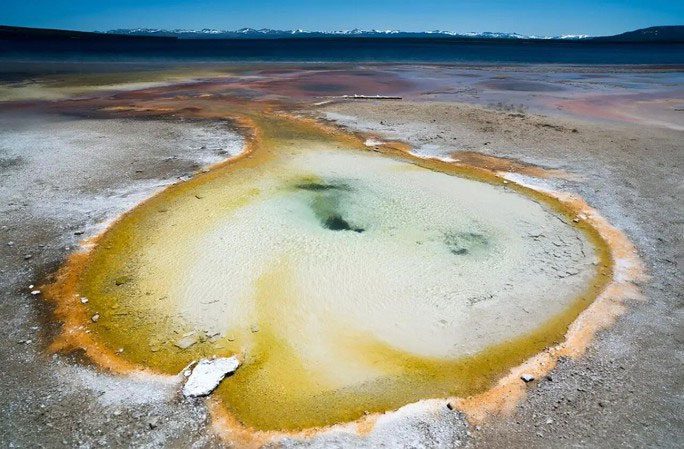A bizarre community of microorganisms in the United States, which has sparked hope for extraterrestrial life searches, actually has many “relatives” in Europe and Asia.
These are microorganisms that thrive in boiling water, with one of the earliest known representatives being the group residing in Yellowstone National Park in the United States, an area constantly bubbling due to one of the world’s most intense volcanic systems.

“The boiling water home” of microorganisms in Yellowstone National Park (USA) – (Photo: ORNL).
These organisms, which prefer to live in this “hellish” environment, along with those found deep beneath the Arctic permafrost or those surviving without water in the Atacama Desert (Chile), have brought new hope to space researchers.
They serve as evidence that life can exist under extreme conditions, which are traditionally thought to be “unsuitable for life.” This suggests that planets that are too hot, too cold, or too dry may still harbor life.
Thus, studying these “relatives of extraterrestrial life“ right here on Earth always holds special value.
According to Sci-Tech Daily, a new study from the United States, Iceland, and Japan, led by scientist Mircea Podar from the Oak Ridge National Laboratory (ORNL – USA), has examined several hot springs across these three countries.
These locations feature extreme temperatures of 65 degrees Celsius or higher, previously considered too hot for any life to survive.
Amazingly, boiling-water-loving microorganisms thrive in these “hellish” waters, which include unique geological and chemical characteristics.
Even more surprising, they have a close genetic relationship with each other, despite being separated by tens of thousands of kilometers, indicating a highly complex evolutionary relationship.
The way each species adapts to its local hot spring conditions also provides valuable insights into how they have evolved in such extreme environments, akin to those found on other planets.
The new study, recently published in the journal Environmental Microbiology, suggests that the evolutionary pathways of these organisms could pave the way for potential biotechnological applications.


















































